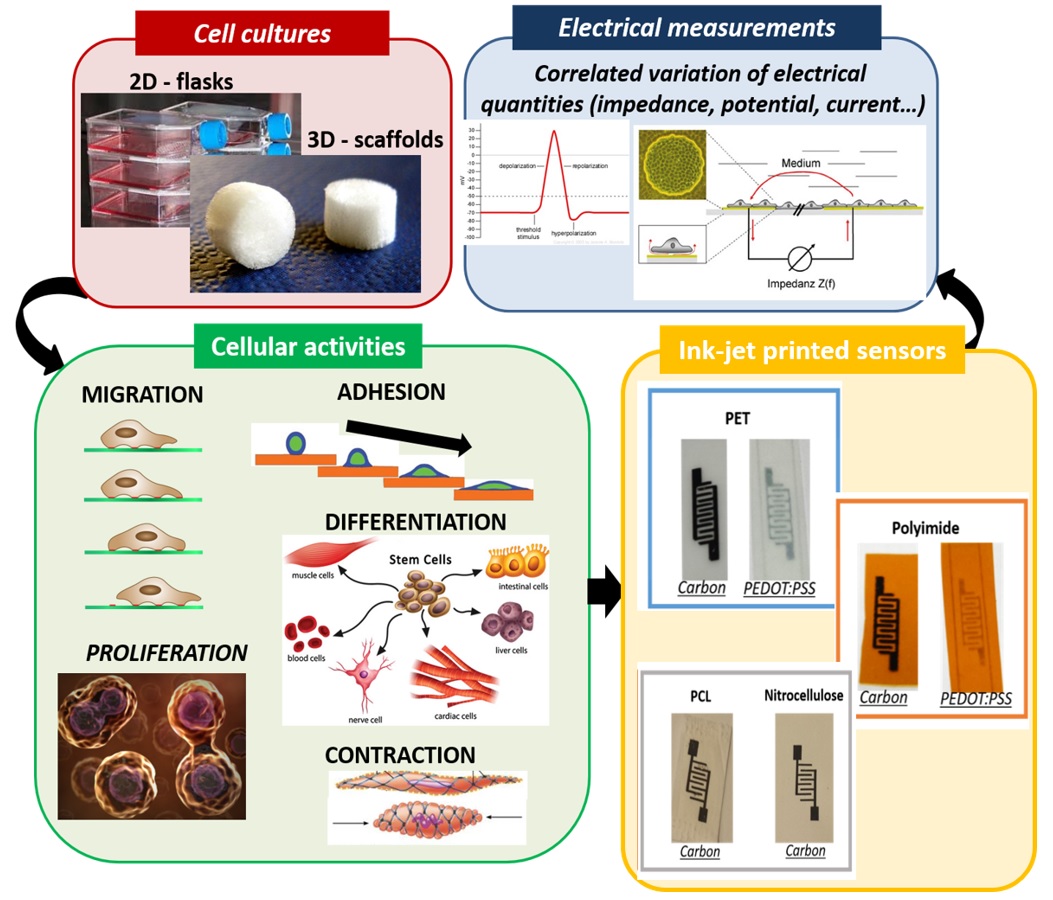In recent years, techniques for sensitive non-invasive, real-time monitoring of cell growth and differentiation are highly demanded. A promising field is represented by electrochemical sensors capable of providing real-time quantitative information about cell cultures. In particular, printing techniques represent an extremely promising innovative methodology to produce biocompatible customizable sensors that could be easily integrated directly in scaffolds. Hence, a classical scaffold can be transformed into an “Intelligent Scaffold” that can behave as a biosensor for analyzing cell behaviour. This would allow executing long lasting experimental tests along with non-invasive continuous monitoring of cells activity, mimicking their physiological environment. In light of this, the activity addresses the development and characterization of sensing elements able to monitor cell culture adhesion, growth and differentiation, by means of printing technologies. Furthermore, it investigates particular stretchable materials (e.g., PCL, gelatin) and inks to allow monitoring of cardiomyocytes under dynamic conditioning.
The final aim is to sensorize a classical Gelatin/Chitosan scaffold in order to make it capable of monitoring cell activities such as growth, proliferation and adhesion. In this research, conductive scaffolds are fabricated by two different methods (by “external addition of carbon via inkjet printing” and by “freeze drying method”), they are electrically characterized via bio-impedance spectroscopy method and their conductivity is investigated. The recorded impedance change can be correlated with cell properties, such as proliferation, adhesion etc. and hence can provide information about current state of cell activity. Therefore, initial experimental tests for doping of carbon black material have been conducted and results showed that carbon black has an ability to increase the conductivity of scaffold. This elucidated the importance of carbon black clustering for development of a conductive network. Thus, in future, this perfectly designed “intelligent conductive scaffold” can act as a biosensor, which can even sense a small change of cellular activity by impedance fluctuation.

From left to right: concept for an intelligent conductive scaffold as a biosensor for monitoring cellular activities; Gelatin/Chitosan non-conductive scaffold; Gelatin/Chitosan/Carbon Black conductive scaffold.
a
This activity is carried out in collaboration with the Department of Molecular and Translational Medicine, the Department of Clinical and Experimental Sciences, both of the University of Brescia, and with the Ecole Polytechnique Fédérale de Lausanne (EPFL), Lausanne (Switzerland).
a
For more info, please contact Ahmed Khan, Sarah Tonello, Mauro Serpelloni or Nicola Lopomo.

